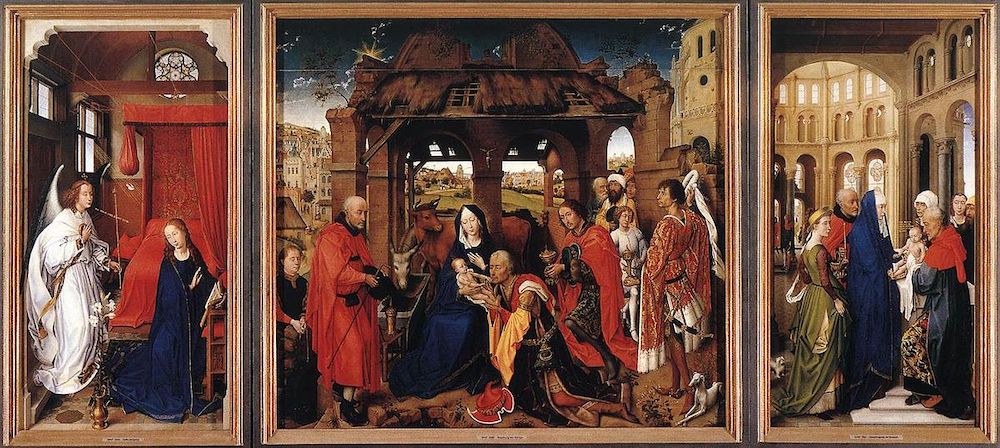Interlude - Rogier van der Weyden at the Alte Pinakothek
The purpose of this site is for me to write about an art show I’ve seen each week. Obviously, that’s a purpose that can’t be fulfilled at the moment, with galleries - and gallery-goers - in lockdown. Time for something different then: from home, I’m going to focus each post on a work in a permanent collection, shuttered somewhere in an empty museum, that I’ve been thinking about for some reason.
Here’s this week’s original stimulus: I’ve been dreaming about that once in a lifetime Van Eyck exhibition that opened in Ghent this spring. How can I make myself feel better for missing it? Maybe by reflecting on great other works in the Northern Renaissance I’ve seen over the years. Not just the Arnolfini Portrait at the National Gallery. But what about my encounters with Rogier van der Weyden’s Columba Altarpiecein the Alte Pinakothek in Munich?

The large triptych is one of the absolute highlights of that museum’s outstanding Flemish collection, hung right next to van der Weyden’s self-portrait as Saint Luke. Both paintings display the artist’s astounding skill at portraying human expressions - something that defeated van Eyck - as well as the incredible sharp detail in textures and colours characteristic of the movement as a whole.
In the altarpiece, the steep hills match the gabled roofs of the townscape in the background of the middle panel. The winding streets teem with people. And, once the eye moves past the conventional Annunciation on the left, the foreground is unusually heavily populated too. Have there ever been so many onlookers to the Adoration of the three Kings?
Even these groups are themselves a testament to the communal: Van der Weyden was decades in to a successful career when he painted the altarpiece in 1455. Successful enough to run a large workshop, who worked together to produce this complex, crowded, memorably beautiful work.
While the master’s hand guides the rhythm of the figures and the important faces, some of the poses and materials of the minor figures are straight cut and pastes from other paintings. Strikingly, a woman observing the Baptism of Christ on the right-hand panel appears to have been ported over from a different painting entirely - her flat expression undoubtedly limned by an apprentice.
I was lucky to have seen this crowd once; I’ll see it again; and I’ll catch up with those van Eycks brought together and then shut away in Ghent eventually, too.
The Columba Altarpiece is in the permanent collection at the Alte Pinakothek, Munich